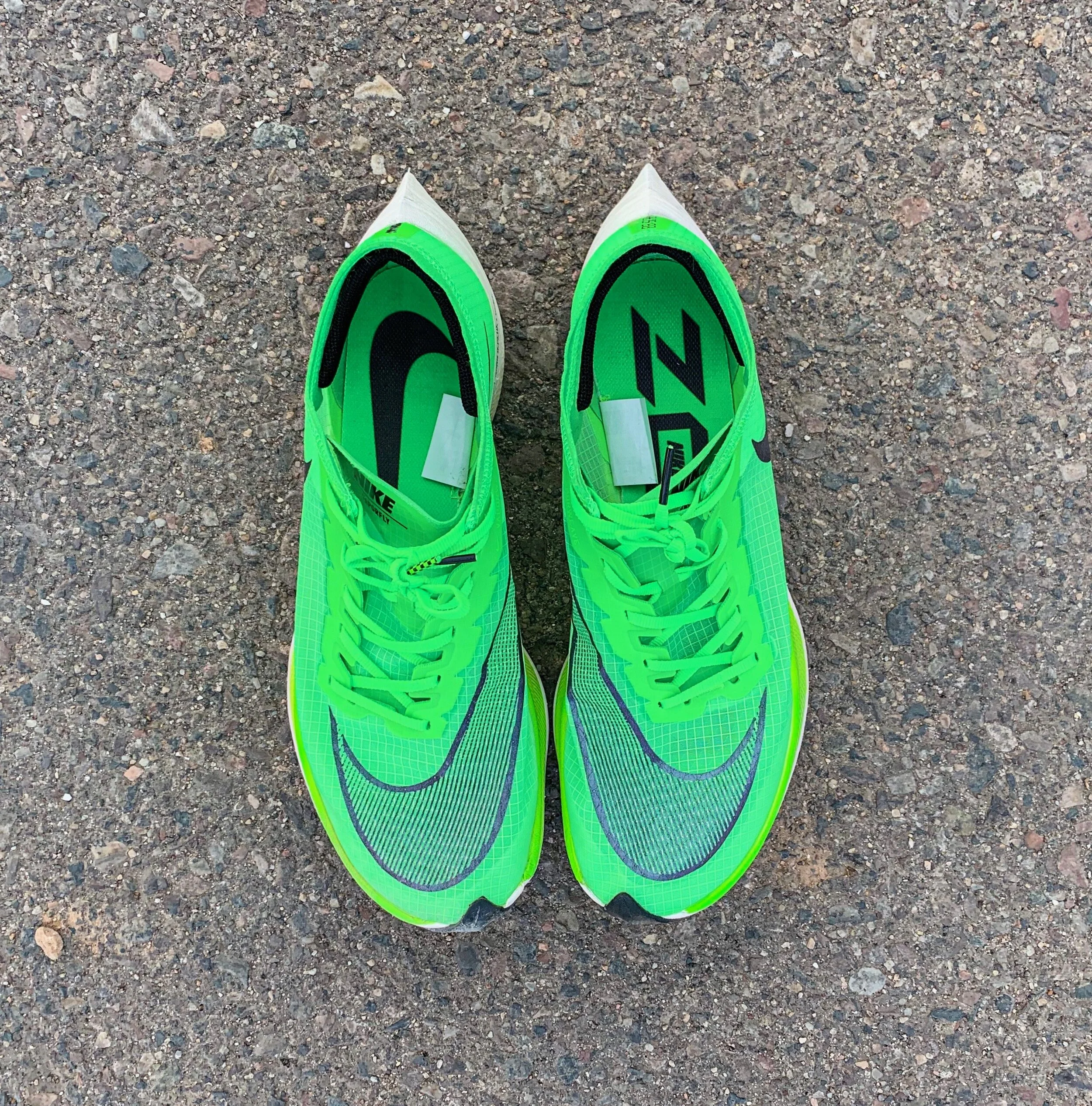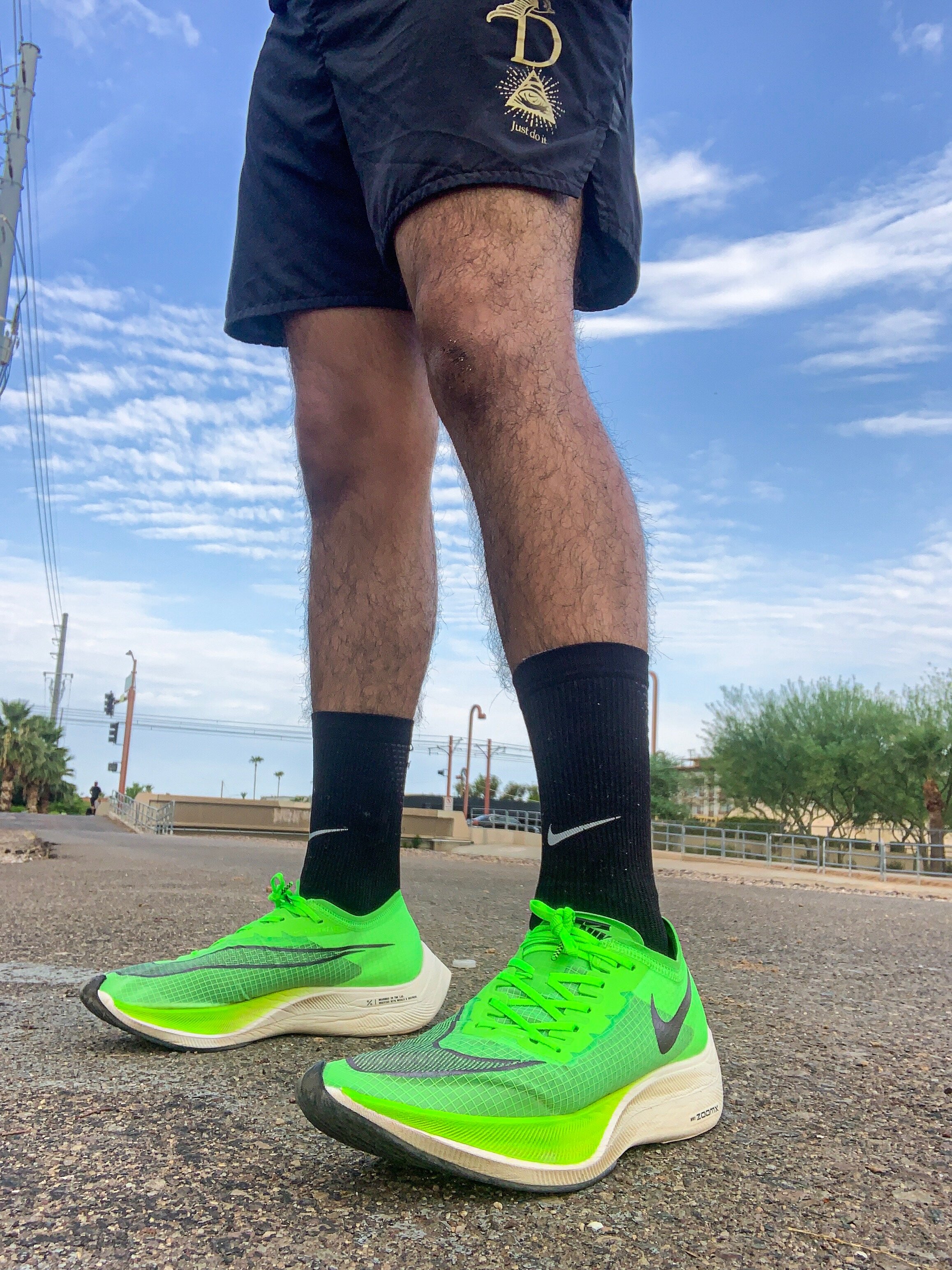How the Nike ZoomX Vaporfly NEXT% Looks & Performs On Foot
The performance review was published on Nice Kicks on July 25, 2020. You can read the article in its original format here.
Nike Running has been miles ahead of the competition ever since it introduced the Nike Zoom Vaporfly 4% when it attempted to break the 2-hour marathon spearheaded by world-class runners such as Eliud Kipchoge.
Recently, Nike has shattered expectations while simultaneously raising the ceiling of what a performance running shoe should be.
The Vaporfly 4% have lived up to the hype by being worn on 19 medalists in the most prestigious marathons (seven of those were first place finishes).
So what made the Nike Zoom Vaporfly 4% so special? For starters, the shoe was constructed with one goal in mind — become the fastest shoe for the fastest runners. With that goal, the shoe contained a carbon fiber plate which was inserted the midsole to create a spring-like effect with every step. In addition to that, the shoe was designed to lower energy cost by 4 percent (hence the name).
In other words, the shoe is engineered to make you go faster with less effort thanks to its design and performance features.
While the Nike Zoom Vaporfly 4% was revolutionary and atop of the running shoe chain, Nike athletes asked for more and the Swoosh delivered.
The Nike ZoomX Vaporfly NEXT% is the latest chapter within Nike Running to redefine what fast means, looks and feels.
The basis of the NEXT% is similar to what the Nike Zoom Vaporfly 4% featured.
The full-length curved carbon fiber plate remains as the propeller and the weight of the shoe is the same despite 15 percent more foam. The new features, however, are what set “fast” apart from “the fastest.”
The upper features a new form of Flyknit known as Vaporweave. In essence, it’s a lot lighter and more breathable than regular Flyknit. Vaporweave stays cooler as it absorbs less liquids whether they be rain or sweat. As aforementioned, the shoe features 15 percent more ZoomX foam which equates to approximately 85 percent energy return.
The traction pattern was designed to grip better during wet weather especially in the forefoot area. Lastly but equally as important, the inside of the shoe’s heel features a thin foam pod as it minimizes irritation on the Achilles regardless of the amount of miles being ran.
So how well does the shoe actually perform?
Although correlation does not imply causation, the Nike ZoomX Vaporfly NEXT% could very well debunk that and even be the root of breaking the 2-hour marathon. There’s no denying that the shoe is insanely lighter than anything else Nike has every created. The numbers back it up. I ran 4 miles at a 7:44 mile pace (30:58) on July 16 in the Nike Zoom Pegasus 35 Turbo. On July 22, I ran 4 miles at a 6:59 mile pace (27:56) in the Nike ZoomX Vaporlfy NEXT%.
There’s no denying that the shoe played a significant role in cutting down my run by 3:02 (around 9.7 percent) within a matter of a few days. Sure, there can be a few factors such as weather, diet, water intake and more that affected my run but a nearly 10 percent difference is astronomical.
Not only did I feel lighter, I felt like I was soaring over the hot Phoenix pavements during my morning run. Sure, it was 91 degrees with 38 percent humidity but it felt my feet were churning like a train engine with no indication of slowing down.
As I prepare to run my first-ever marathon in February, the Nike Zoom Vaporfly NEXT% is a definite trainer for the ensuing miles. If you’re interested in upgrading your running game, you can grab a pair of the shoe for yourself over at Nike.com and select retailers now.






